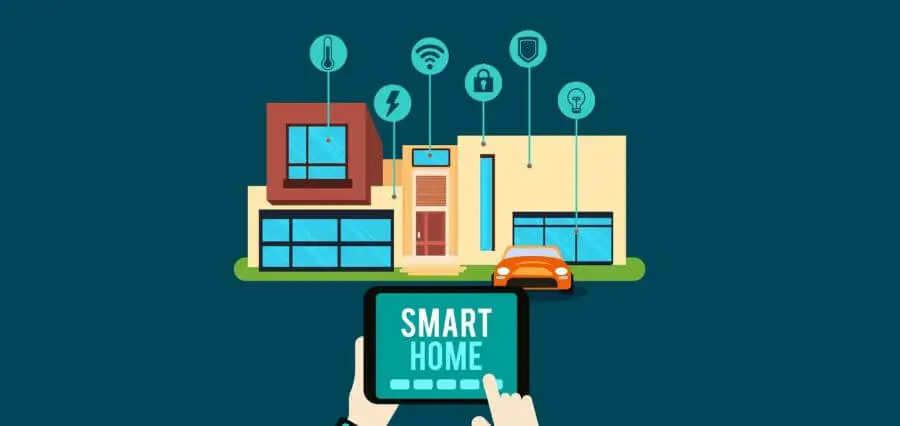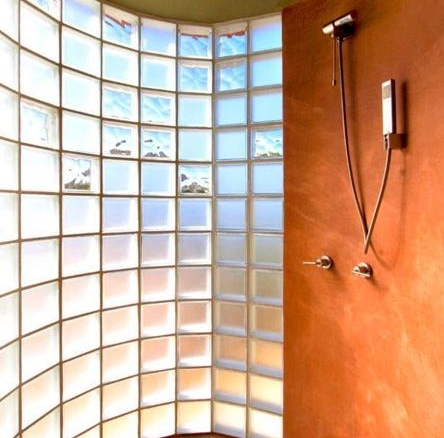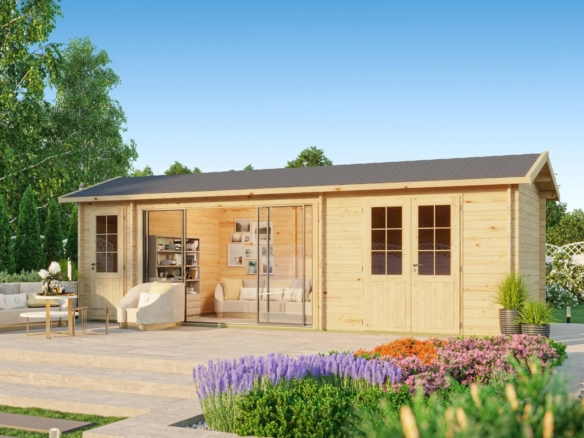With the latest smart technology, you can control an entire home in your hand. This technology not only adds convenience and efficiency for occupants, but it also translates into significant financial gains by increasing the property value of a home if you need to sell. Smart features come in many types, from lighting to entire home automation. Whether you want to go all out in a smart home upgrade or start with one feature at a time, a few smart technology options boost a home’s value.
What Is Smart Technology?
Smart technology typically refers to systems or devices that can connect to the internet and communicate with other devices or the device owner to improve efficiency. For example, smart lighting connects with the owner’s smartphone and other appliances for long-distance control and monitoring. Smart technology provides a more tailored and convenient option to control devices or systems. Smart systems can usually be controlled by app or voice commands from any distance, which is easier and more efficient.
Appliances
Smart appliances, such as smart refrigerators or ovens, can be controlled from a distance via voice or app. They connect to a home’s Wi-Fi. You can adjust the temperature, turn it on or off, or manage other settings without physically walking up to the appliance. Certain appliances, such as smart refrigerators, also have touch screens and app access. You no longer have to worry whether you left the stove on; your appliance’s app will let you know.
Thermostats
Smart thermostats allow you to adjust, control, and schedule temperature settings from anywhere using your phone, voice, or other applications. They can also connect with other smart technology, such as lighting, to automate temperature based on different settings. Smart thermostats allow you to store profiles or schedules to adjust temperature automatically.
Outlets
Many people are unaware that even electrical outlets can be outfitted with smart technology. A smart outlet can be controlled, including wholly shut off, from an app or phone. Smart outlets can help occupants reduce energy consumption and turn off devices that may cause safety hazards when left on, such as ovens or space heaters. Occupants may also want to turn on outlets that control specific devices when forgotten, such as automatic pet feeders or air purifiers.
Lighting
Smart lighting allows occupants to customize their home’s lighting in several ways, including brightness, color, and scheduling. Some smart lighting also has motion sensor settings, allowing users to conserve energy by reducing lighting when not occupying a space. Smart lights can also be scheduled according to the time of day, creating a custom experience for an occupant. Smart lighting typically responds to voice commands as well.
Electronics
Most electronics have smart capabilities, such as a smart television, speakers, or entire entertainment system. Some branded speakers, such as Amazon’s Alexa, can be voice-commanded to play media, shop, or automate the home. Smart televisions have various apps to make channel-changing or subscription services simple and efficient. Specific remote controls even have voice command capabilities.
Windows
Smart windows can control the amount of light and heat filtered through them according to preference. They can also encourage energy efficiency by cutting AC usage through heat reduction or cutting artificial light usage by increasing natural light. They can even automatically tint for added privacy if desired. Smart technology can also automate electronic blinds or shudders.
Roofing
Smart roofing is equipped with internet-enabled sensors that can detect damage, excess weight, and wear on the roof. These sensors alert owners when it’s time to repair or replace the roof, which can avoid further damage or deterioration. You can also manage the energy capacity of solar shingles.
Home Automation
Smart hubs or control panels connect to all smart or capable electronic devices for complete home automation. These home automation control panels are single devices that can manage all devices instead of juggling many different devices or apps. A home with the highest property value will have full home automation. These hubs can even be controlled with voice commands for ultimate efficiency.
Home Security
Security systems can connect to Wi-Fi and have smart technology capabilities so owners can monitor and address security issues or settings anywhere. These systems include cameras, motion sensing, and smart locks to prevent security breaches in the home.
Installing Smart Upgrades
Many smart devices are simple to set up and do not require an electrician’s intervention. However, a licensed electrician may be the best choice for complete overhauls. You can hire the best electrician by studying their online reviews, experience, and qualifications, such as licensing. Licensing requirements vary by location, so be sure you’re current on standards and requirements for your specific area. For example, North Carolina electrical license requirements include at least two years of work experience, classroom training, and passing an exam. By verifying electrician credentials, you can ensure a safe and efficient smart home upgrade.
Conclusion
Smart home technology makes home automation and control simple and efficient. Many systems and devices, such as appliances, thermostats, and windows, can be outfitted with smart technology. Smart technology can also improve energy efficiency in a home, lowering utility bill costs and reducing wear and tear. The investment benefits that smart technology provides can raise property value. Be sure to hire a qualified, reputable, and licensed electrician in your area to ensure safety and efficiency in smart home installation.




